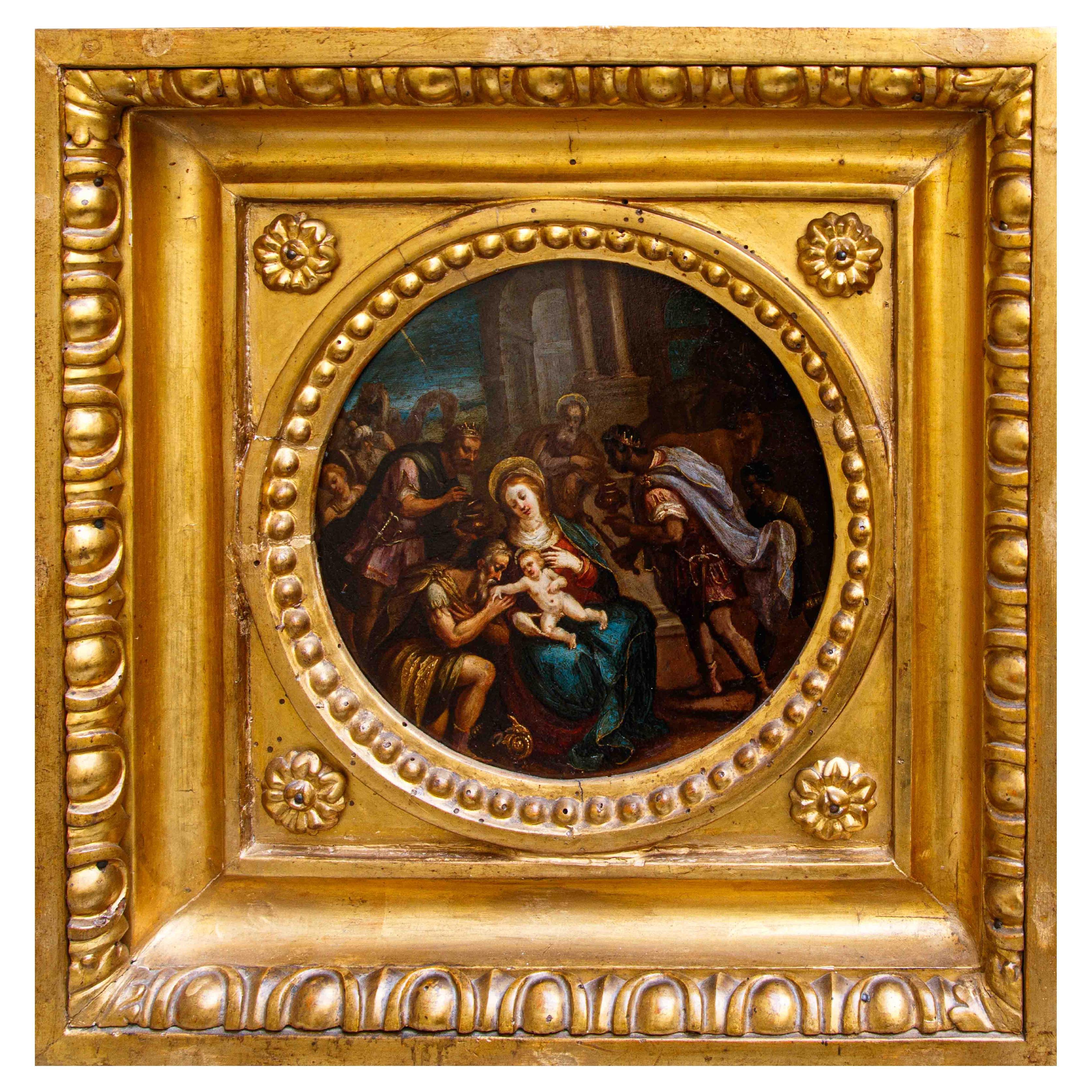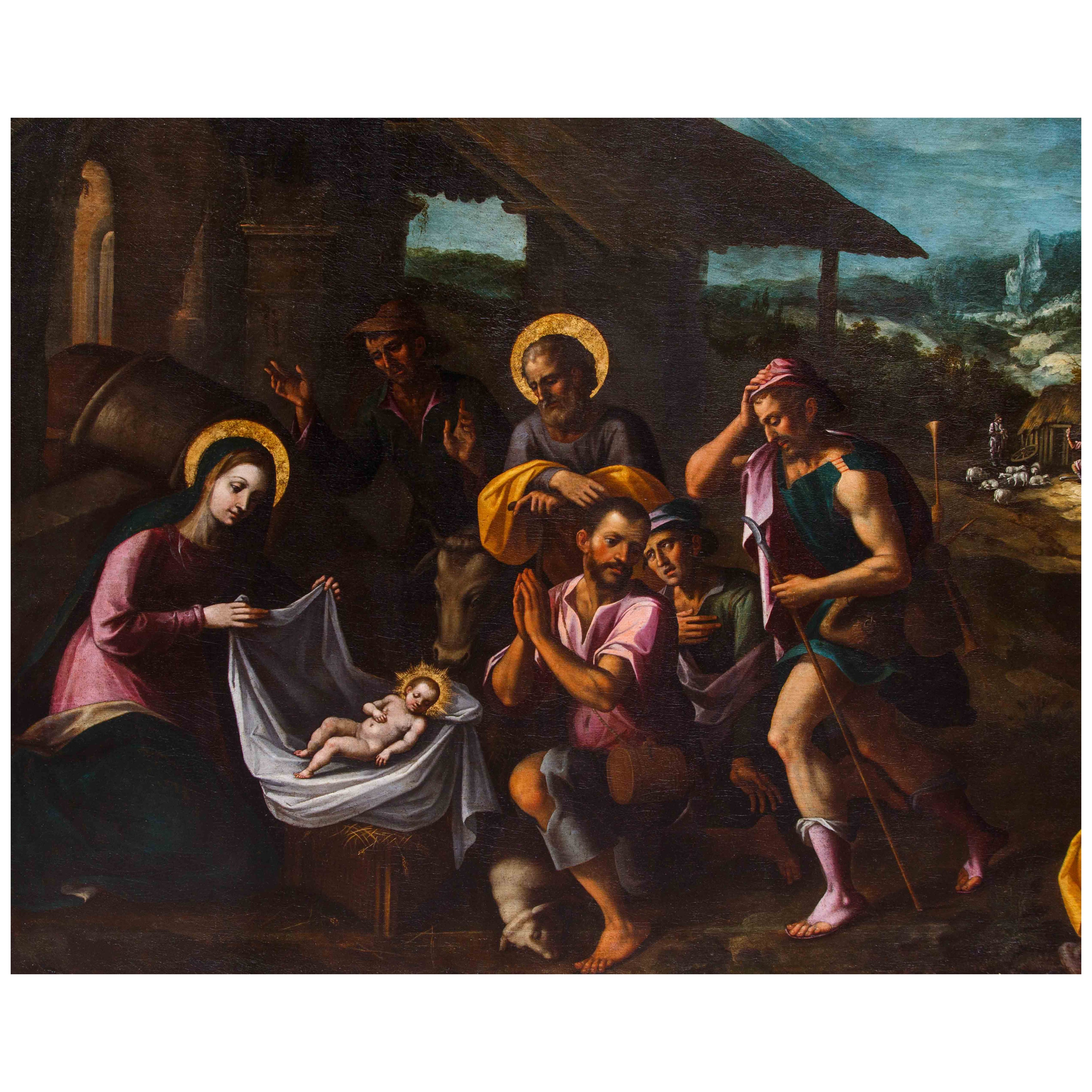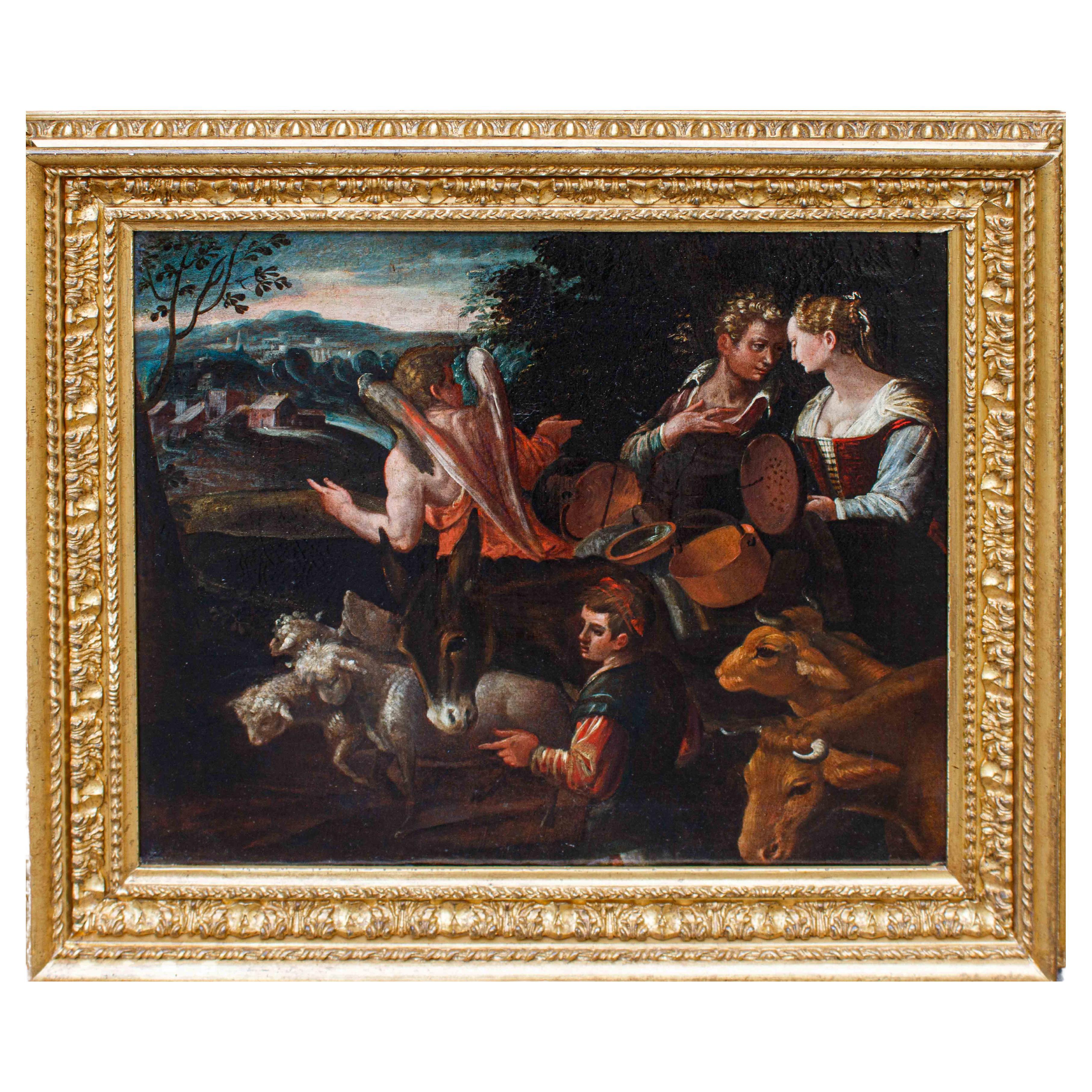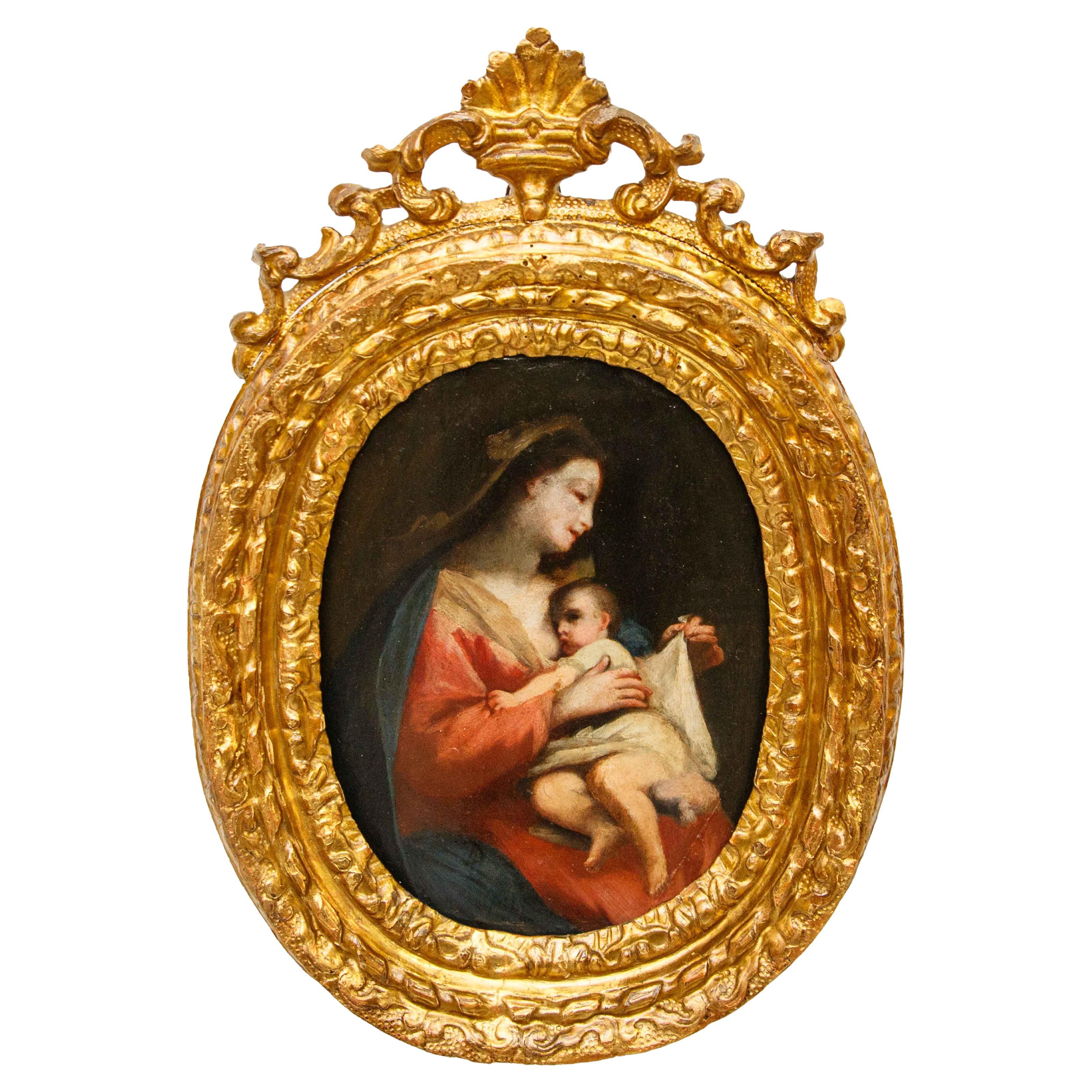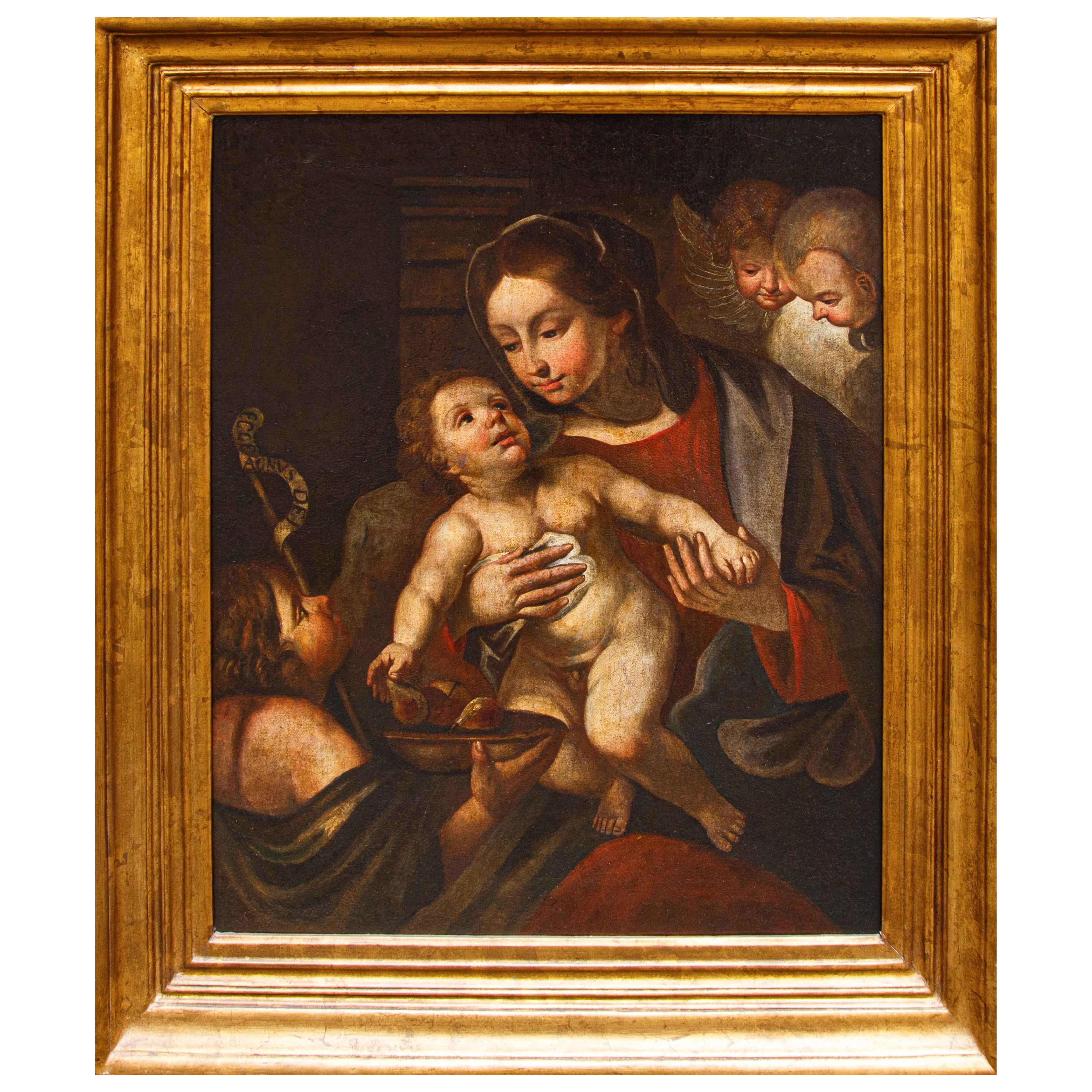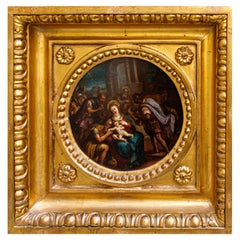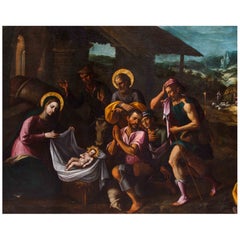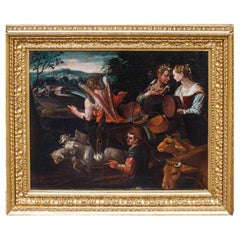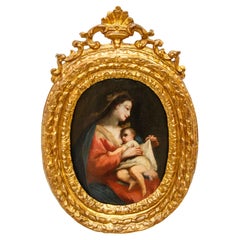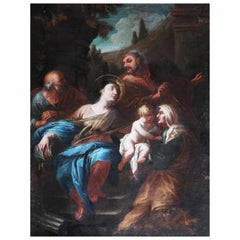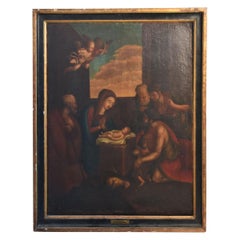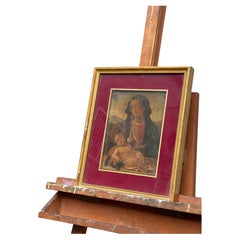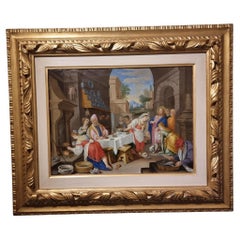Items Similar to Central Italian school, second half of the 16th century, Oration in the Garden
Want more images or videos?
Request additional images or videos from the seller
1 of 11
Central Italian school, second half of the 16th century, Oration in the Garden
$4,515.71
£3,325.81
€3,760
CA$6,143.27
A$6,826.53
CHF 3,577.17
MX$83,715.18
NOK 45,624.75
SEK 42,922.09
DKK 28,624.30
Shipping
Retrieving quote...The 1stDibs Promise:
Authenticity Guarantee,
Money-Back Guarantee,
24-Hour Cancellation
About the Item
Central Italian school, second half of the 16th century
Oration in the Garden of Gethsemane
Oil on canvas, 80.5 x 65.5 cm
Christ's prayer in the Garden/Bush of Gethsemane, located on the western slope of the Mount of Olives outside the eastern walls of the Holy City of Jerusalem, constitutes one of the most significant moments of the Christian religion and therefore one of the most finely analyzed subjects in the field of art. Its iconography implies precise symbolism, starting with the three apostles present at the event, Peter and the two sons of Zebedee, James and John. It is no accident that the three are the same as at the Transfiguration: for if this is the occasion on which Jesus reveals the unspeakable nature of the True God, showing Himself to be One and Triune, the prayer in the garden is the clear prelude to the death of Christ Himself. The recurrence of the three is justified in the Pauline explanation that the truth shown through the Transfiguration is attainable only through Christ's death; the three are thus symbolic of the Son's imminent but necessary death so that through the Passion the redemption of humankind can take place. In the painting, Jesus' need to die is also symbolized by the chalice extended to him by the angel, mentioned only in Luke (22:43), to whom Christ addresses the words "My Father, if it is possible, take this chalice away from me!" (Mt. 26:39), and metaphorically containing the blood of sacrifice. In the distance, on the right, the handful of soldiers led by Judas can be seen approaching.
The painting is clearly influenced by suggestions derived from Michelangelo's and Raphaelesque lessons borrowed in the Roman context (especially in the rendering of the apostles), here taken from the Central Italian school, perhaps specifically from Cremona. Compare this oration with the almost identical one by Marcello Venusti (Mazzo di Valtellina, 1510 - Rome 1579). Venusti learned Raphael's vocabulary through his master Perin del Vaga, a direct pupil of Urbino, to which he added Michelangelo's figurative analysis when the Roman patrician Tommaso de' Cavalieri passed on to him drawings with mythological subjects that Michelangelo had given him. Venusti also dabbled in copying many of Michelangelo's works, one recalls among them the replica, on canvas, of the Last Judgment commissioned by Cardinal Alessandro Farnese (1549). Similarly, Girolamo da Carpi (Ferrara, 1501 - ivi 1556), author of an oration with the same approach, following an apprenticeship with Benvenuto Tisi known as il Garofalo was converted to Raphaelesque ways through Giulio Romano, whom he met in Mantua. Further evidence of the common Roman substratum, but diluted by Emilian figurativism, is the St. Peter stretched out in the foreground, which can be glimpsed in a painting of the same subject by Giulio Campi (Cremona, 1502 - ivi, 1572), now in the Pinacoteca Ambrosiana and datable between the 1650s and 1570s; Campi, too, before embracing the Mannerist looseness of Camillo Boccaccino, had been influenced by Giulio Romano, at the time an untamed source of artistic novelty. By contrast, the same Christ returns in an oration in a private collection by the adopted Roman Taddeo Zuccari (Sant'Angelo in Vado, 1529 - Rome 1566), who also, just 14 years old, was profoundly influenced by Raphael and Correggio when he reached the capital. Similar magnetism, in later years, recurs in Ludovico Cardi known as il Cigoli (Cigoli di San Miniato, 1559 - Rome, 1613) strongly indebted in style, see the oration in the Museo civico di Montepulciano, from Santi di Tito (Firenze, 1536 - there 1603), himself adopting Raphaelesque classicism after a trip to Rome between 1558 and 1564 (where, moreover, he joined Taddeo's brother Federico Zuccari on the decoration of the Casina of Pius IV). As a final comparison to the present canvas it is possible to address an oration, owned by the diocese of Faenza Modigliana, by Giovan Battista Ramenghi (Bologna, 1521 - ivi, 1601) a daring advocate of the more conservative Emilian school, of declared Raphaelesque dependence, in opposition to the rising Bolognese star of the Carracci.
- Dimensions:Height: 25.6 in (65 cm)Width: 31.5 in (80 cm)Depth: 1.97 in (5 cm)
- Style:Other (In the Style Of)
- Materials and Techniques:Canvas,Oiled
- Place of Origin:
- Period:
- Date of Manufacture:16th Century
- Condition:Wear consistent with age and use.
- Seller Location:Milan, IT
- Reference Number:1stDibs: LU5918245953992
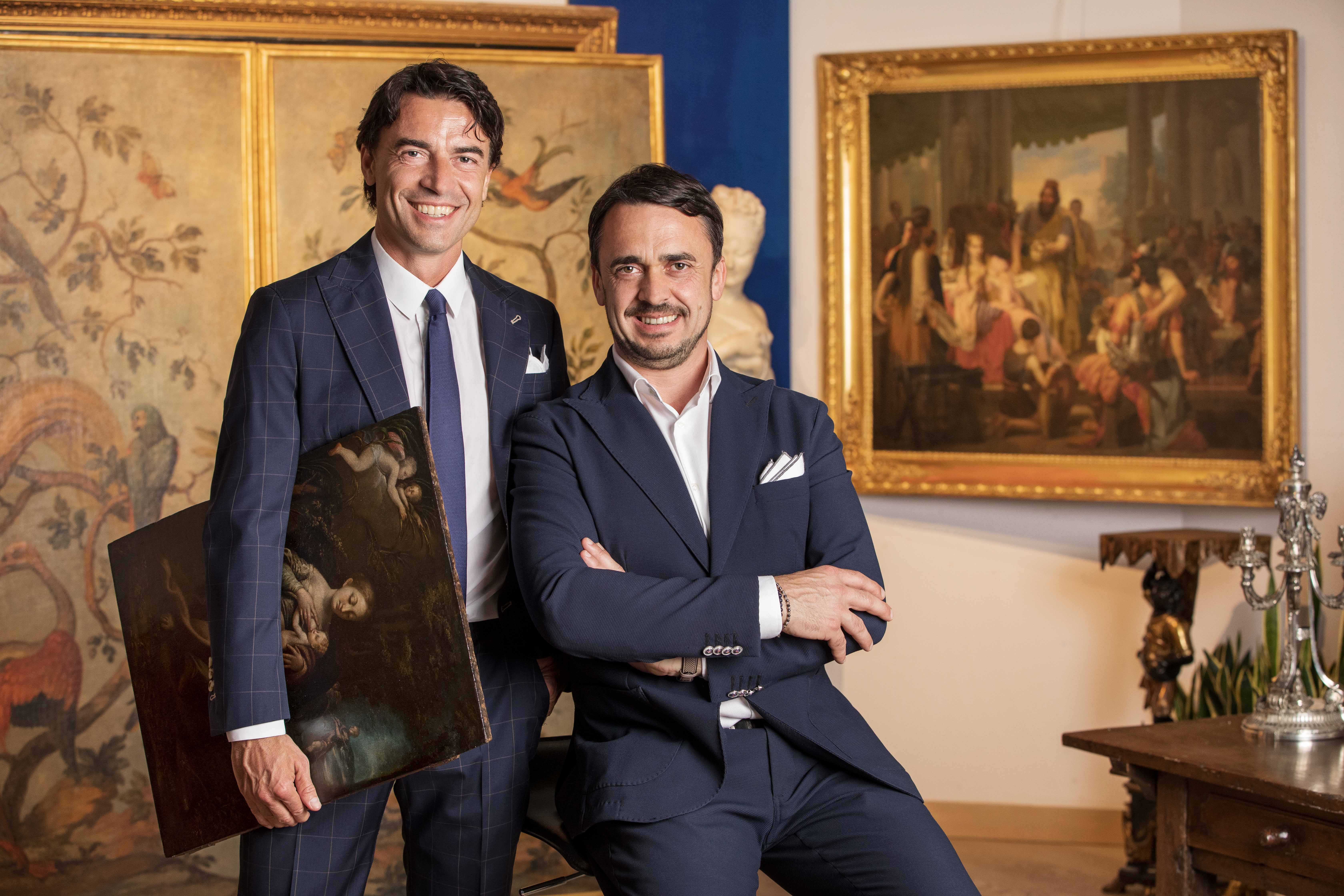
About the Seller
5.0
Vetted Professional Seller
Every seller passes strict standards for authenticity and reliability
Established in 2000
1stDibs seller since 2021
30 sales on 1stDibs
- ShippingRetrieving quote...Shipping from: Milan, Italy
- Return Policy
Authenticity Guarantee
In the unlikely event there’s an issue with an item’s authenticity, contact us within 1 year for a full refund. DetailsMoney-Back Guarantee
If your item is not as described, is damaged in transit, or does not arrive, contact us within 7 days for a full refund. Details24-Hour Cancellation
You have a 24-hour grace period in which to reconsider your purchase, with no questions asked.Vetted Professional Sellers
Our world-class sellers must adhere to strict standards for service and quality, maintaining the integrity of our listings.Price-Match Guarantee
If you find that a seller listed the same item for a lower price elsewhere, we’ll match it.Trusted Global Delivery
Our best-in-class carrier network provides specialized shipping options worldwide, including custom delivery.More From This Seller
View All17th century, Flemish School, Adoration of the Magi
Located in Milan, IT
17th century, Flemish School
Adoration of the Magi
Oil on copper, diam. 19.5 cm
Framed 35.3 x 35.3 cm
Engraved on the back in seventeenth-century calligraphy "Fiamingo"
Vivid wo...
Category
Antique 18th Century and Earlier Dutch Other Paintings
Materials
Copper
Nordic artist active in Italy, last quarter of the 16th century, Adoration
Located in Milan, IT
Nordic artist active in Italy, last quarter of the 16th century
Adoration of the Shepherds
Oil on canvas, 117 x 171 cm
The work conforms as a reworking of numerous Bassanesque cue...
Category
Antique 18th Century and Earlier Dutch Other Paintings
Materials
Canvas
Venetian school, Tobias and Sara in Nineveh, oil on canvas, 16th century
Located in Milan, IT
Venetian School, second half of the 16th century
Tobiah and Sarah led to Nineveh by the archangel Azariah
Oil on canvas, 48 x 56 cm - Framed, 58 x 72 cm
The present canvas, made w...
Category
Antique 16th Century Paintings
Materials
Canvas
Mantuan school, 18th century, Madonna suckling the Child
Located in Milan, IT
Mantuan school, 18th century
Madonna suckling the Child
Oil on panel, 27.5x22 cm
The softly collected and intimate dimension suggested by the present painting underscores the cert...
Category
Antique 18th Century and Earlier Italian Other Paintings
Materials
Wood
Italian school, 17th century, Madonna and Child with St. John
Located in Milan, IT
Italian School, 17th century
Madonna and Child with St. John
Oil on canvas, 86 x 99 cm
Framed, 113 x 93 cm
The seventeenth-century painting presents the Virgin intent on presenti...
Category
Antique 18th Century and Earlier Italian Other Paintings
Materials
Canvas
17th century, Emilian school, Rural landscape with gallant scenes
Located in Milan, IT
17th century, Emilian school
Rural landscape with gallant scenes
Oil on canvas, 37 x 47.5 cm
Framed, 61 x 50.5 cm
The bucolic amenity of the present is reflected within the joyo...
Category
Antique 18th Century and Earlier Italian Other Paintings
Materials
Canvas
You May Also Like
Italian School; Holy Family with St. Anne, 17th-18th century, oil on canvas
Located in Brescia, IT
Description
Holy Family with St. Anne
Oil on canvas
cm 75,5x57
In the center is clearly distinguished the Virgin Mary, seated with a halo, looking at the Child Jesus, who is held by...
Category
Antique Early 18th Century Italian Louis XIV Paintings
Materials
Canvas
18th Century Oil on Canvas Italian School
By Carlo Maratta
Located in Marseille, FR
Painting with probably biblical Italian school characters End of the 17th beginning of the 18th century unsigned carrying a Carlo Maratta cartouche of in...
Category
Antique Early 18th Century Italian Baroque Paintings
Materials
Canvas
Atico dipinto olio su tavola raffigurazione di vergine maria, IXX SECOLO
Located in Milano, MI
Atico dipinto olio su tavola raffigurazione di vergine maria - IXX SECOLO.
Category
Antique Early 1800s Italian Paintings
Materials
Wood
Oil on copper 800 Christ in the house of Martha with Mary and Lazarus
By A. Manzoni
Located in Villa Verucchio, Emilia-Romagna
Oil on copper 800 Christ in the house of Martha with Mary and Lazarus - A work of rare beauty
The 1800 oil on copper Christ in Martha's House with Mary and Lazarus is an extraordina...
Category
Antique Mid-19th Century Italian Renaissance Paintings
Materials
Copper
Italian 13th century oil on canvas painting "Lot and Daughters"
Located in Cesena, FC
Lot and his daughters, EMILIAN SCHOOL
XVIIIth century
Oil on canvas 175 x 126 cm
Lot and his daughters is one of the themes most frequently encountered by seventeenth-century pain...
Category
Antique 18th Century Italian Baroque Paintings
Materials
Canvas, Paint
Dipinto Cirinna, Raffigurazione Di Fanciulla, Vintage, Firmato, Inizi xx S
Located in Milano, MI
dipinto cirinna - raffigurazione di fanciulla - vintage - firmato - inizi xx s
Descrizione :
raffigurazione di fanciulla dormiente
Origini :
Italia
Periodo di produzion...
Category
20th Century Italian Paintings
Materials
Canvas
